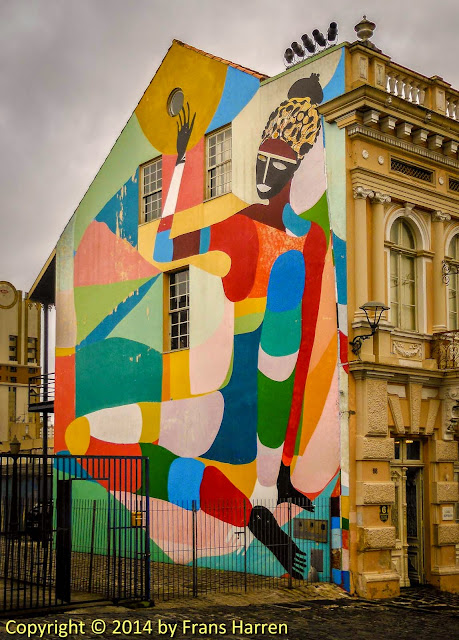
Casa Hoffmann – Centro de Estudos do Movimento
The Hoffman House is the headquarters of the Center for Movement Studies, which aims to explore new aesthetic movement, being a reference site for artists and other professionals with expertise in the areas of dance, theater, visual arts and education. The activities include the infrastructure necessary to artistic development, supported by a library and courses taught by renowned artists and thinkers with varied themes approach, including criticism of the dance, aesthetics, philosophy, and scenic design.
Built by Hoffmann family, in 1890, the house is a symbol of prosperity of a family of Austrian weavers who moved to Brazil in the late nineteenth century. The property also provides architectural landmark of urban transformation that Curitiba lived at the turn of the twentieth century. Inhabited by Hoffmann until 1974, the house was rented and later underwent several changes, until destroyed by fire in 1996. Only the outer walls and the facade were kept. The property, cataloged as a unit of interest in preserving the city, completely restored, since March 23, 2003 houses the Center for Movement Studies.
See: fundacaoculturaldecuritiba
Historic center of Curitiba
The Historic Center of Curitiba, also called the Historical Section of Curitiba, is a set of buildings important historical and cultural city of Brazil to Curitiba, capital of the state of Paraná. Part of this path is informally known as Largo da Ordem, where every Sunday since 1973, is the traditional Fair Largo da Ordem.
There are important buildings such as the Church Order, the Paranaense Museum, the Church of the Rosary, the Metropolitan Cathedral Romário Martins House, the Presbyterian Church, Ruins of St. Francis, the Garibaldi Society, Memorial City of Curitiba, the Museum of Sacred Art, in addition to the Flower Clock and the Memory Fountain.
The place is traditional meeting point of the population, since besides the fair Sunday, houses several bars, pubs and restaurants, some with typical food of immigrants who helped colonize the municipality.
History
Closed to vehicular traffic in the first administration of then Mayor Jaime Lerner, this region began to receive more attention and care by local authorities. With significant historical, cultural and social role, has buildings in the vicinity of centuries XVIII and XIX, which currently are restored and adapted for commercial use.
Since the eighteenth century, the Square was the scene of intense and varied trade, when the settlers took wagon horticultural products, and bought the business houses. The drovers and farmers in the region used to watering their horses and mules in the trough, still existing in the center of Largo da Ordem, opposite the Church Order and Romário Martins House. Dating from the mid-eighteenth century, is built in stone with a metal bowl.
Its architecture has influenced Portuguese and German, this more urban characteristics.
Legends
Surrounded by urban legends, some involving the Ruins of San Francisco. The best known is the existence of a series of tunnels that would link such unfinished church to other churches in Largo as well as the city's cathedral, the Paraná State College and Concordia and Garibaldi clubs. Although proven the existence of secret passages hidden in the underground city, never found out exactly what points they connect, either the date of construction, or at least its purpose.
Largo da Ordem
Popularly known as Largo da Ordem, and considered the heart of the historic center of Curitiba, was baptized in the 18th century as Páteo of Our Lady of the Rosary. Later it was renamed Páteo San Francisco das Chagas and, from 1917, takes as its official name Largo Colonel Aeneas in honor of Colonel Benedicto Eneas de Paula.
See: wikipedia











0 comments:
Post a Comment